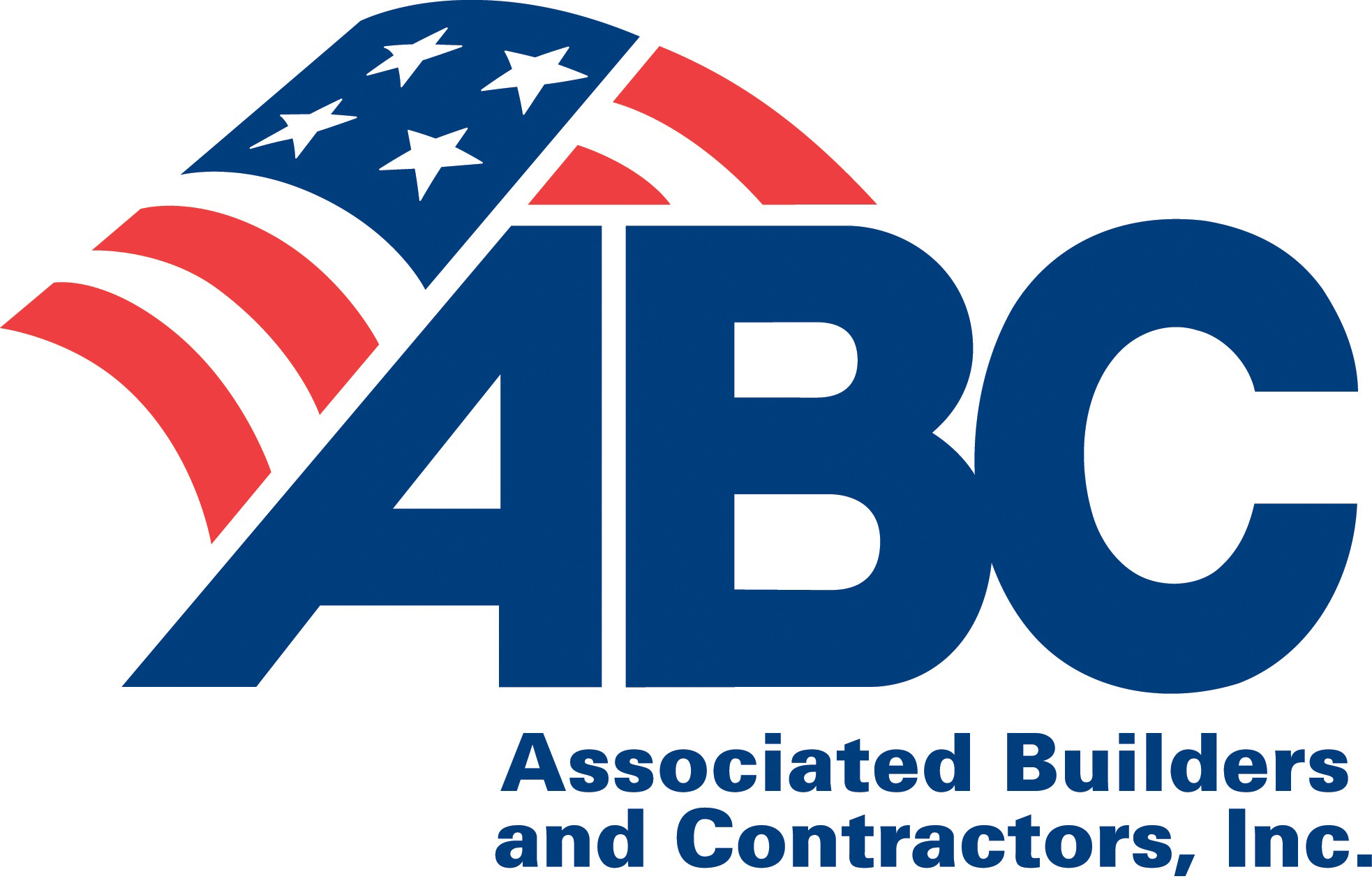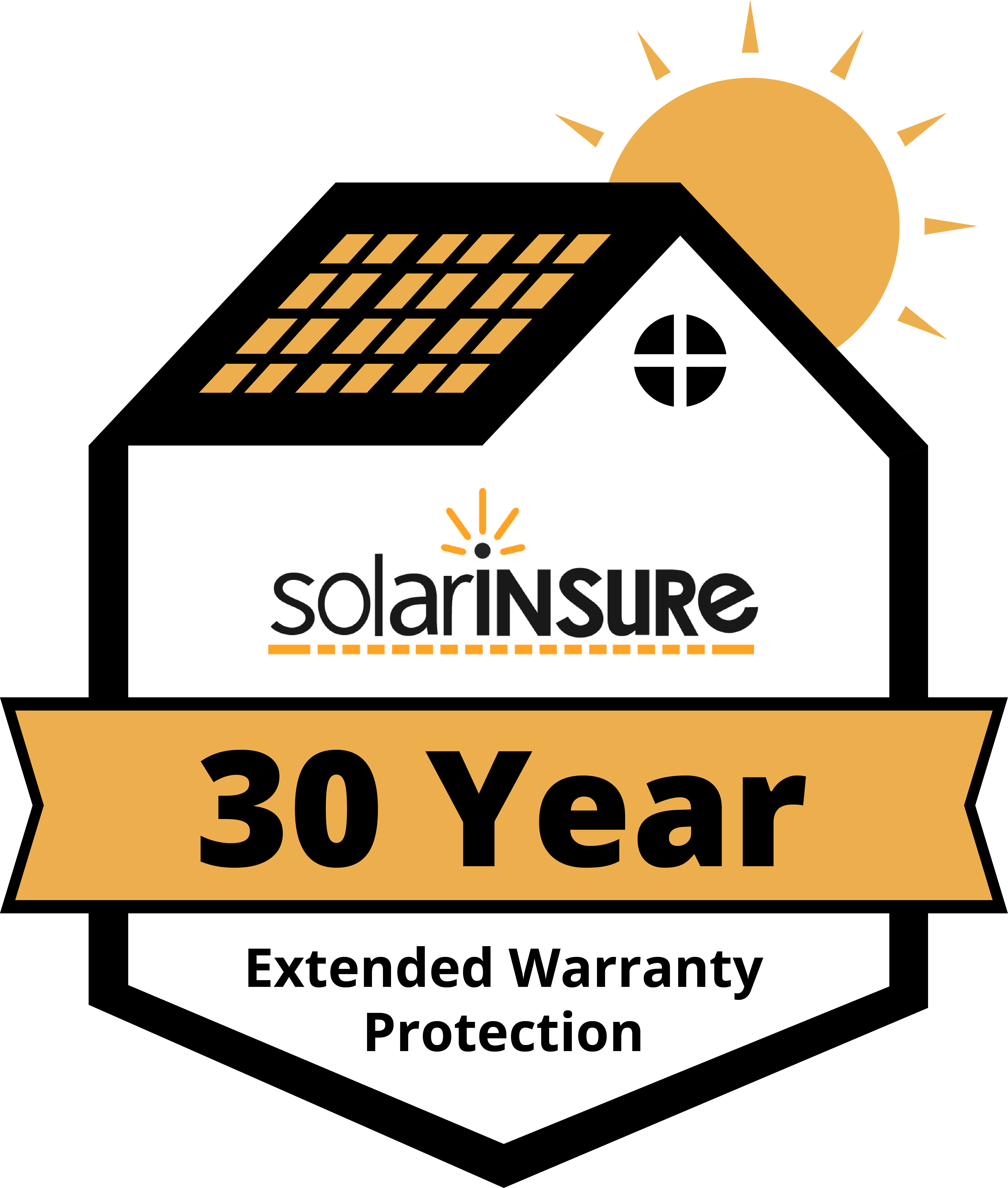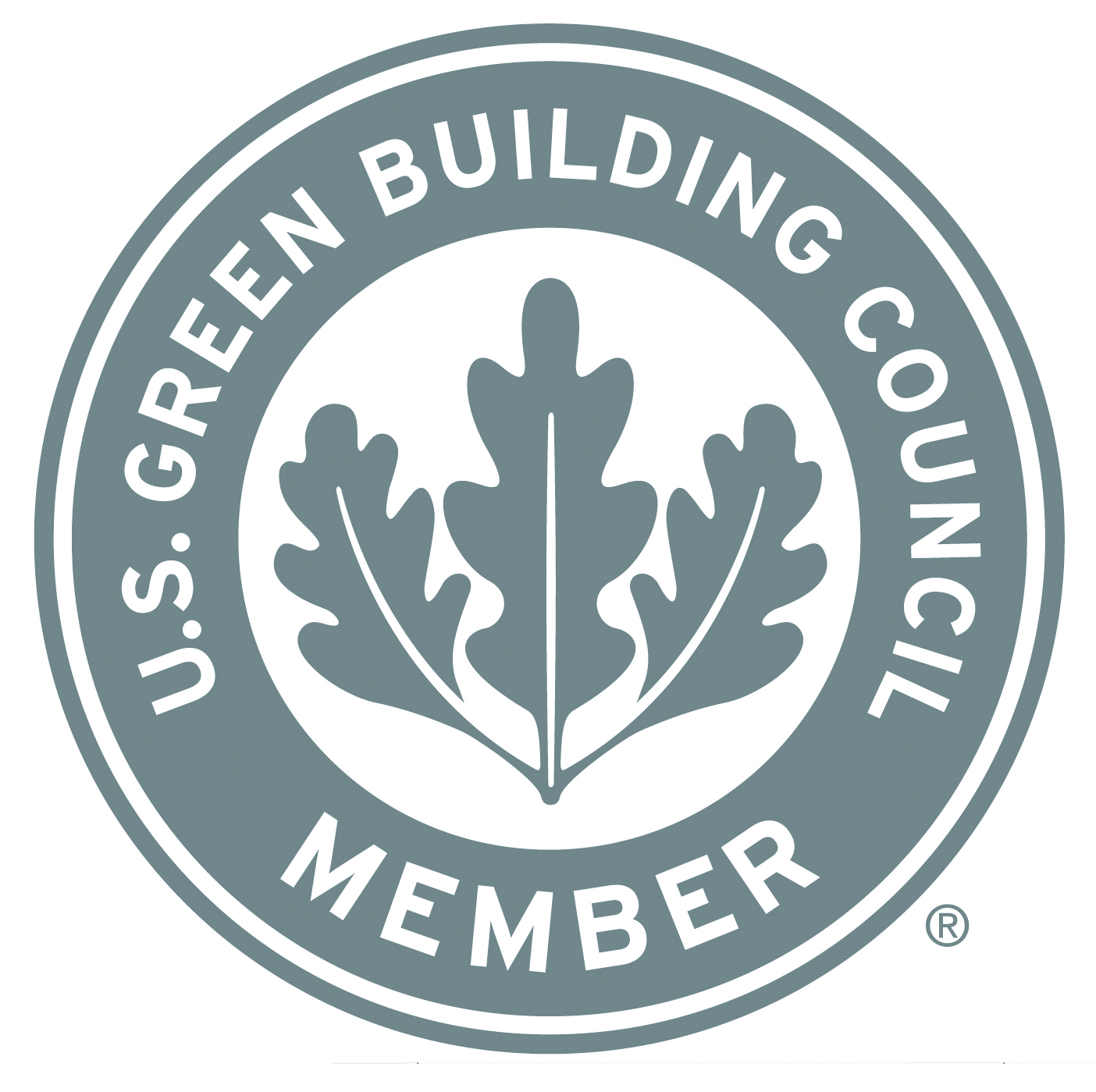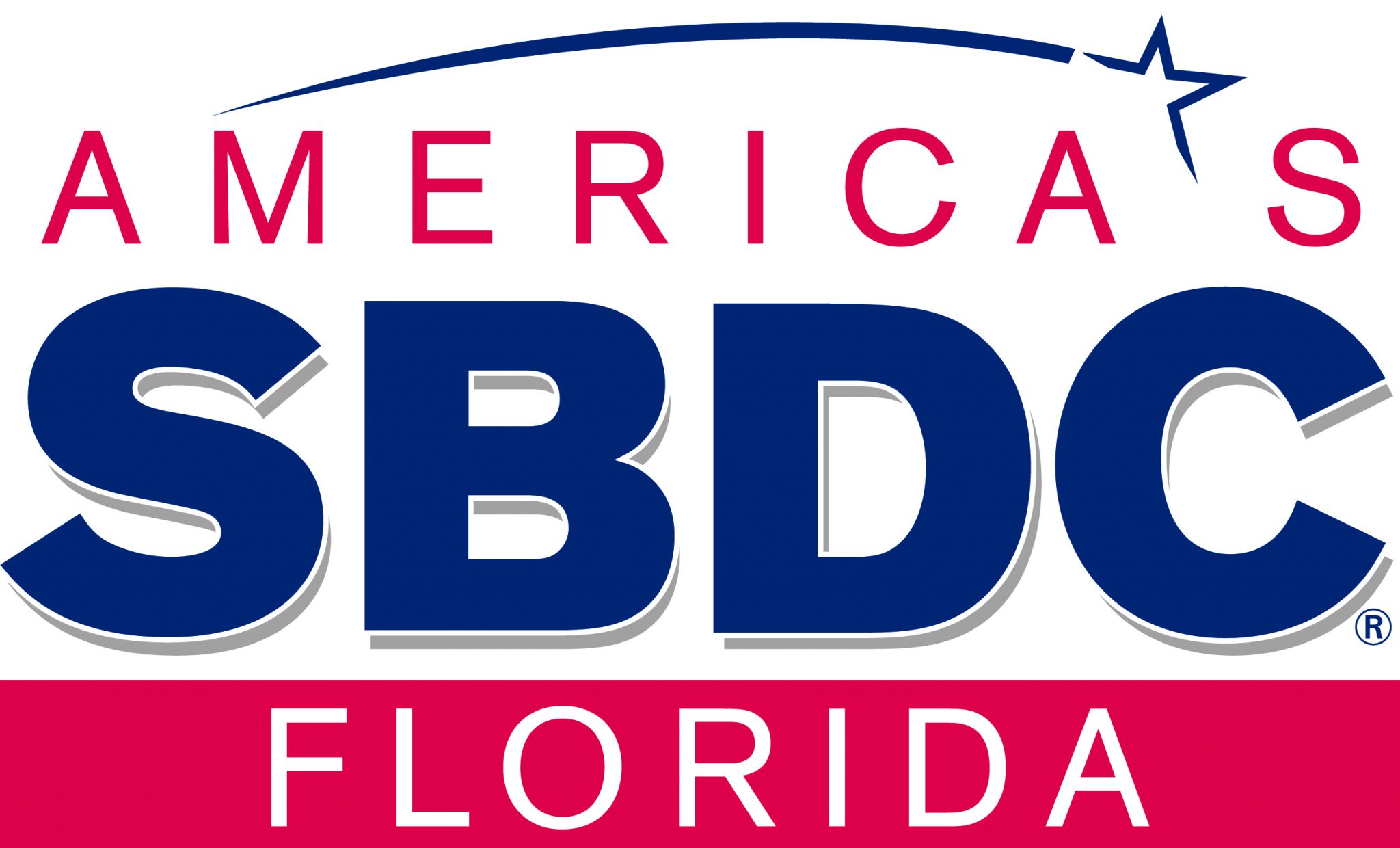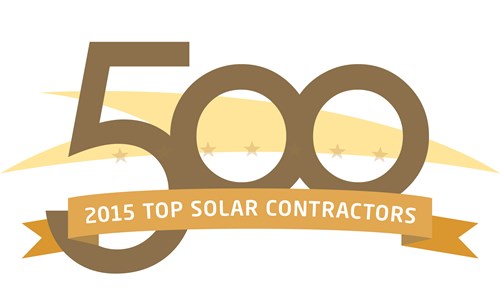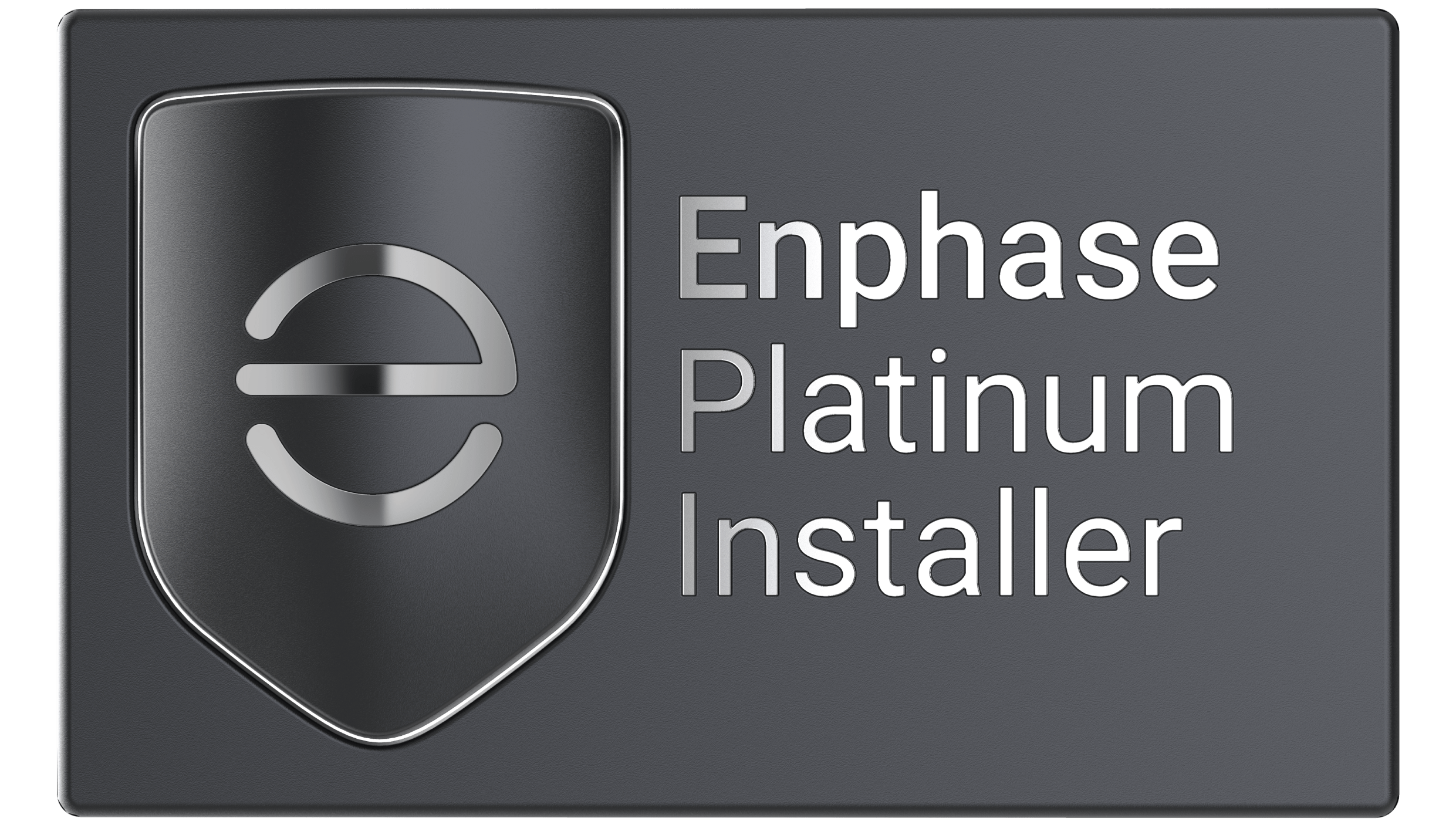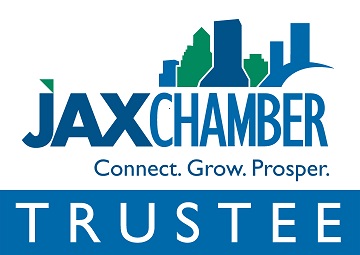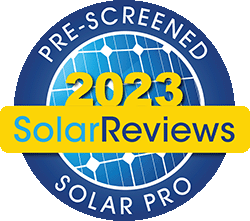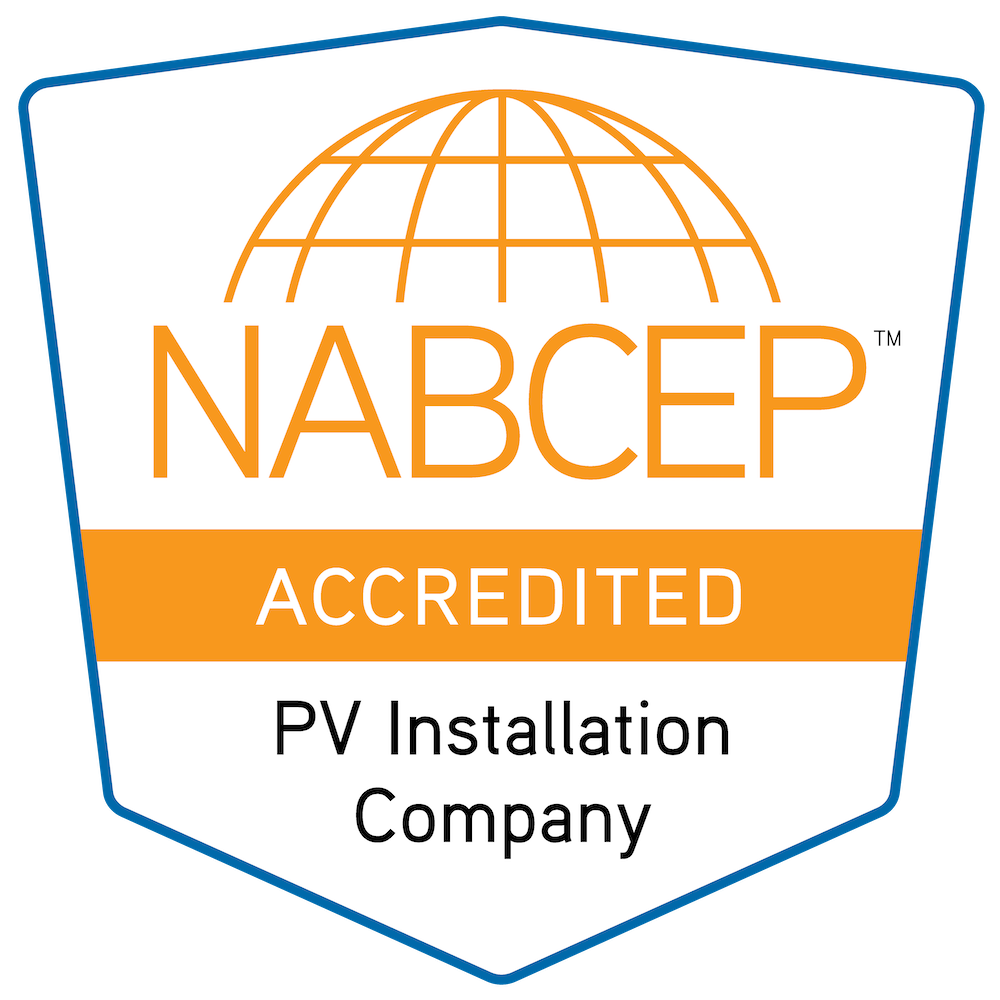Selling your home with solar panels
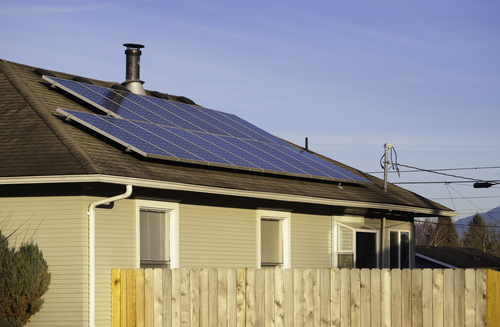
5 things to keep in mind if you’re selling your energy-efficient home
 Solar panels are a great investment for your home. They pay for themselves within five years for the average homeowner. If you’re considering purchasing solar panels, remember they’re a long-term investment.
Solar panels are a great investment for your home. They pay for themselves within five years for the average homeowner. If you’re considering purchasing solar panels, remember they’re a long-term investment.
If you’re selling your home and you have solar panels, keep these things in mind:
- Realtor
Choose a realtor who understands solar panels. Fine one that can educate prospective buyers’ agents and be proactive throughout the process. - Lease agreement
If you’re leasing your solar panels, speak with the leasing office well before you list your home so you know the lease transfer and buyout requirements. - Warranty
Along with discussing the leasing options, discuss the warranty so you can ensure your realtor is well-informed. - Negotiate
Don’t be afraid to negotiate the terms of your solar panel lease with the prospective buyer. Perhaps you pay down the lease of the loan. - Installer
Speak with your solar panel provider/installer to find out what options are available to you. Does it make sense to remove them and take them with you?
Solar panels are excellent for your electricity bill and the environment. Before listing your home, check the condition of your panels and research the best way to use them to your benefit in the sale of your home.
8 reasons commercial solar energy is good for business
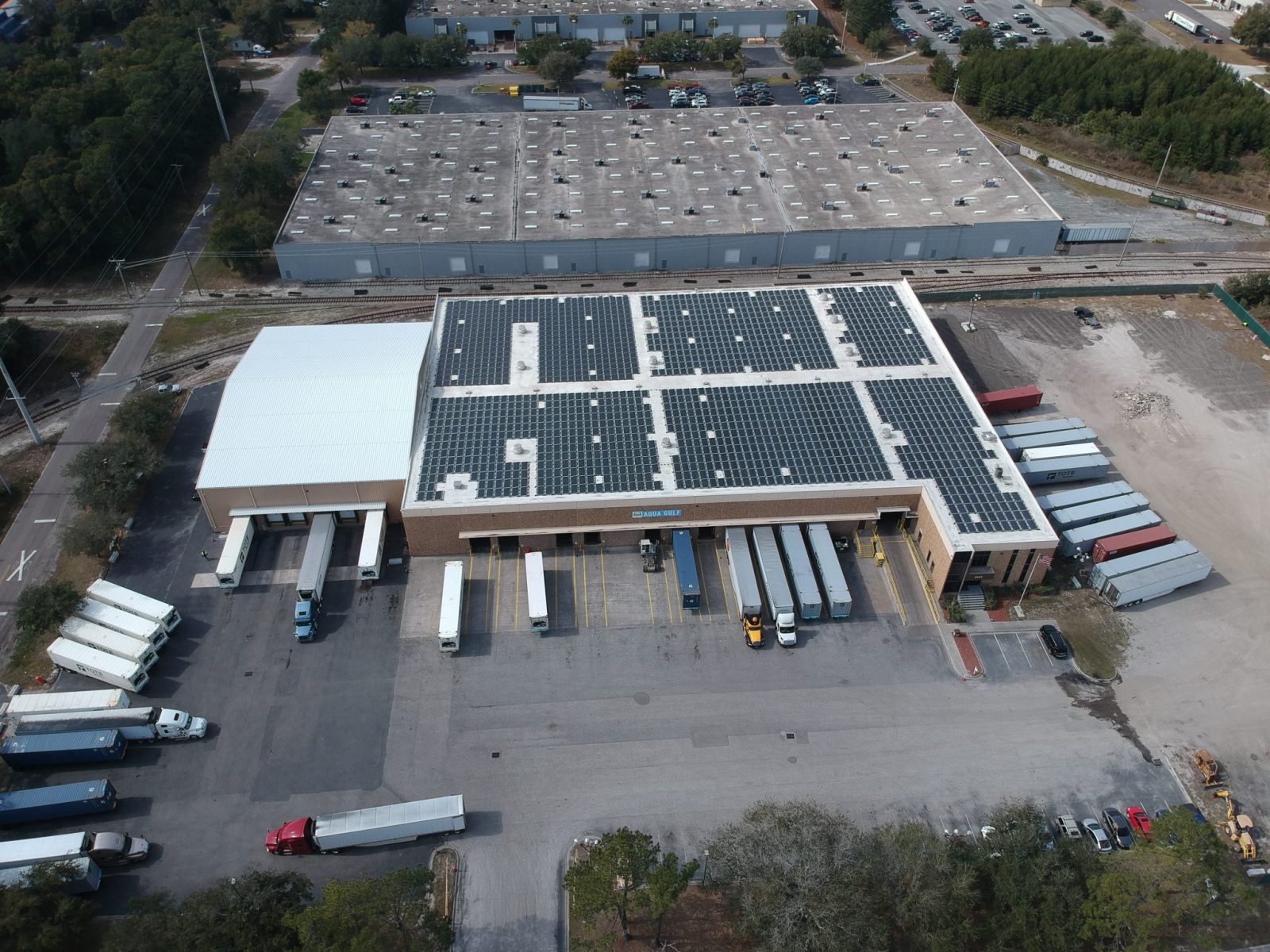
Learn the benefits of going solar
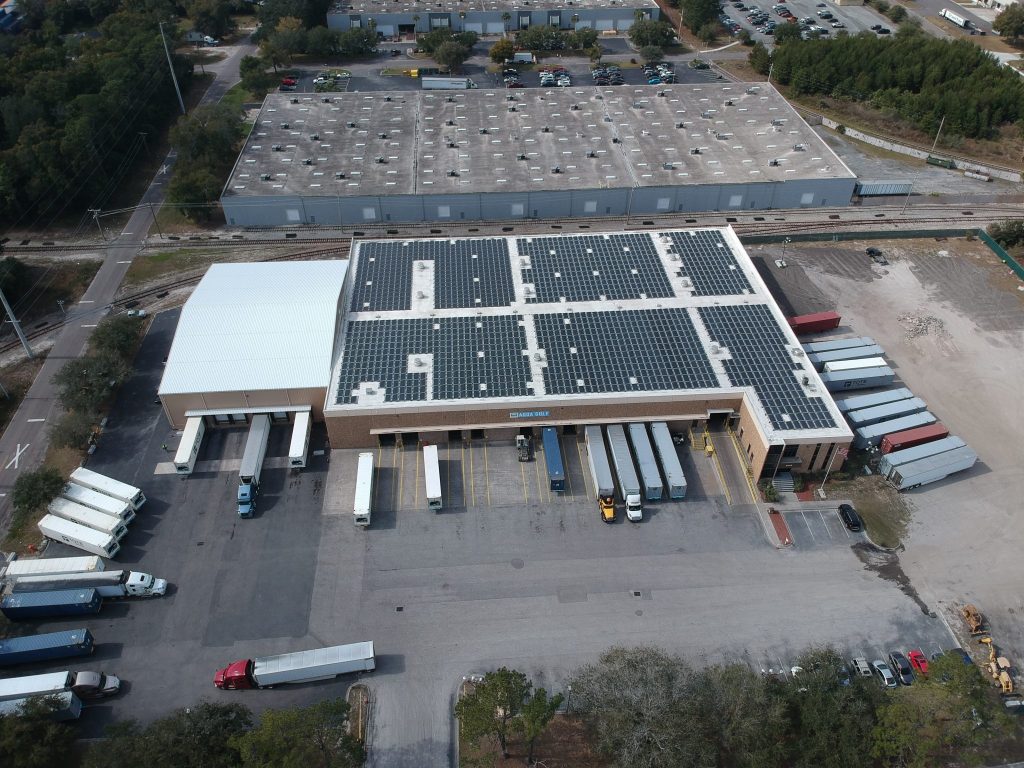
In business, you’re constantly seeking solutions. You’re solving problems for clients, employees and your organization. Did you know that rooftop solar panels on your facility could provide solutions? When considering ways to save money and operate your business more efficiently, you naturally think about factors like inventory control, business-to-debt ratios and reducing turnover. These are all issues from within. By thinking outside the box (and outside your building), you may find even bigger savings and benefits using commercial solar energy.
How can rooftop solar panels help your business?
- Reduce operating costs
Let’s face it: If an initiative isn’t going to save you money, what’s the point? Many businesses realize a 15 to 25 percent savings in after-tax returns, which equals thousands of dollars a year. According to a recent study, the average commercial property owner pays approximately $2,000 a month on electricity bills. After installing rooftop solar, that figure drops to about $500 a month. This is money you can put back into growing your business. You may even get monitoring software so you can track exactly how much energy you are generating through your rooftop solar system. - Ensure financial stability
Energy costs increase practically every year. This can wreak havoc on even the most prudent budget. The sun is free, and with solar photovoltaic panels, you will no longer be at the mercy of the energy industry. Additionally, the cost of purchasing and installing rooftop solar has gone down. - Decrease carbon footprint
Today’s customers demand that businesses be environmentally responsible, and solar panels allow you to meet that requirement. Even a small rooftop solar panel system can greatly reduce your CO2 emissions. Be sure to promote your green efforts in official literature and on social media. - Save during tax time
Photovoltaic panels are typically classified as capital improvements and might be eligible for tax credits or write-offs. This further enhances your return on investment. - Add value to your business
If you ever decide to sell your business or building, rooftop solar panels make an excellent selling point. Future buyers may appreciate the fact that the installation is already taken care of and that they will reap energy savings immediately. Some states also have performance-based incentives, a way to receive payment for the electricity your system generates. - Enjoy low-maintenance, long-lasting energy production
Once installed, rooftop solar panels require little to no maintenance. An annual cleaning is all that’s necessary to keep the panels in top shape and producing energy over their 25- to 40-year life span. - Foster employee pride
Research shows that top job prospects choose companies based on what they stand for, even more than salary. Therefore, by showing that you care about the environment, employees will be more invested in your mission and more likely to remain loyal to your brand. - Demonstrate social responsibility
Customers love businesses that give back. Solar panels are a very visible way to demonstrate your commitment to sustainability. You’ll also be supporting the local economy, as installers will likely be local.
How to clean your solar panels

 As spring arrives and flowers begin to bloom, the abundance of pollen can be a nuisance. Pollen accumulates on your solar panels, hampering their performance. Rain can wash away pollen, but if it hasn’t rained for a while, you’ll have to clean your solar panels on your own. Fortunately, it’s quite easy.
As spring arrives and flowers begin to bloom, the abundance of pollen can be a nuisance. Pollen accumulates on your solar panels, hampering their performance. Rain can wash away pollen, but if it hasn’t rained for a while, you’ll have to clean your solar panels on your own. Fortunately, it’s quite easy.
Before you begin, make sure you set up your ladder on solid ground and that it remains stable while you’re on your roof. Have someone hold the ladder for you when you’re climbing up and down. It’s important to minimize any risks of falling off your roof.
Safety is the most important part of cleaning your solar panels. If you feel that you can’t clean your solar panels on your own, contact a local professional to do it for you.
Cleaning tools
As you prepare, have these items on hand:
- A soft brush or squeegee.
- A bucket of water with soap in it.
- A hose.
Cleaning
Once you have your equipment, you’re ready to get started.
- First, rinse the solar panels with your hose at medium to high power. This is usually enough to remove dirt and pollen from the panels. If needed, have someone available to turn the hose on and off while you spray.
- If you need to do a more thorough job (for example, there are bird droppings on your panels), gently scrub the panels with a soft brush and soapy water – similar to how you clean your windshield.
Finishing
- Once you’ve washed your panels, don’t worry about drying them; the sun will do that for you.
- While you’re on your roof, it’s also a good time to check for damage and verify no fasteners are loose.
Remember: Solar panels can become very hot during the day, so try to clean them in the morning, late afternoon or on a cold day to minimize the risk of a burn.
You don’t need to clean your solar panels often, thanks to rainwaters washing them for you. But, it’s a good idea to know how to do it in case there is a shortage of rain and gunk builds up on your panels.
If you want a professional to clean your solar panels, A1A Solar can help.
How do rooftop solar panel systems work?
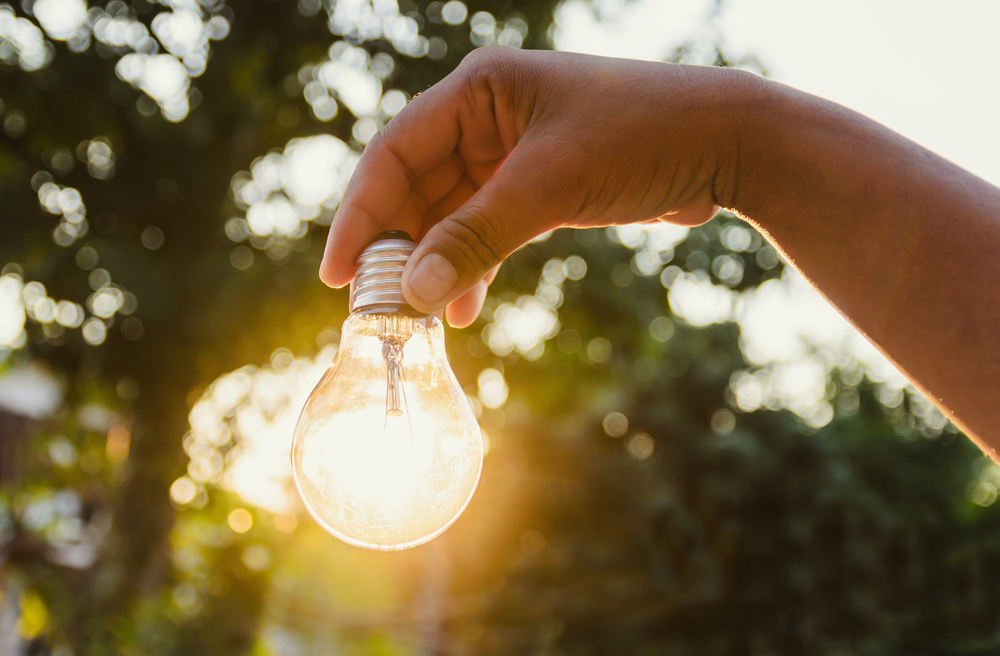
A1A Solar explains what you need to know
 Since the 1800s, physicists such as Heinrich Hertz, Alexandre-Edmond Becquerel, Max Planck and Albert Einstein have studied the effect of light and how to harness it into energy. Fast-forward to the 21st century. We are now using this same research to power homes and businesses with rooftop solar panels.
Since the 1800s, physicists such as Heinrich Hertz, Alexandre-Edmond Becquerel, Max Planck and Albert Einstein have studied the effect of light and how to harness it into energy. Fast-forward to the 21st century. We are now using this same research to power homes and businesses with rooftop solar panels.
Perhaps you’ve seen solar panels in different neighborhoods. Maybe a commercial or ad got your attention. You may be wondering how they work. More importantly, are they right for you?
The basics of rooftop solar panels
- The sun rises each day. When it does, it shines particles of light called photons.
- Photons hit the crystalline photovoltaic cells, which are part of the solar panel. These are the same kinds of cells that are in calculators and rechargeable flashlights.
- Solar panels convert those photons into electrons of direct current (DC) electricity.
- The electricity is changed from direct current energy, which is the type used in batteries, into alternating current (AC) power. This is the electricity used to power your lights, television, microwave, etc.
- A net-energy meter measures how much power your solar panel system produces. Any excess power generated that you don’t use goes back into the electrical grid that everyone uses. On days that are overcast or rainy, when you cannot draw enough energy from sunlight, you will get your electrical power from the grid. In other words, there is a seamless connection so your utility needs are always met.
- Everyone wins. You use less power from the utility company, drastically reduce your electricity bill and help the environment at the same time.
Benefits of rooftop solar panels
- Clean energy from the sun helps combat greenhouse gases and decreases our dependence on fossil fuel sources.
- Low maintenance costs and a long lifespan. Solar panels are quiet and there are no moving parts to break down. When kept clean and free from debris, you can expect your rooftop solar panels to last 15 years or longer.
- As one of the most widely used renewable energy sources, solar panels are popular and trustworthy.
- Solar panels are easily installed anywhere with no large-scale systems or power sources required. This makes them ideal for remote locations or areas where it would be difficult to run additional power lines.
- Due to higher demand, the technology and cost-savings have improved significantly.
Top Ten Solar Myths…Busted

You’ve probably seen solar photovoltaic (PV) panels popping up on rooftops all over Northeast Florida, and wondered whether or not solar really works. There are a number of popular misconceptions about solar power, and often when we speak to prospective clients, they have heard some myths. Coal companies, oil companies, and utilities are more than happy to have their customers keep believing in these myths, and solar companies around the country are working hard to dispel these distortions.
A1A Solar Contracting is the leading solar contractor in our region, with hundreds of happy customers who have experienced first-hand that solar is a fantastic financial decision.
Myth 1: My HOA won’t allow solar
Homeowners associations can be a bit scary, for they do wield a great deal of power when it comes to modifying the exterior of your home. They can dictate the length of your grass, the colors you are allowed to use, and what trees you have in your yard. Furthermore, they can place a lien on your home and impose significant fines for non-compliance. For this reason, one of the first questions homeowners always ask is “what about my HOA?”
Homeowners associations are not legally allowed to prevent you from placing solar on your roof, and they know it. In fact, if they take legal action, by federal law, the HOA will be on the hook for your legal fees. The associations are typically very easy to work with when it comes to getting your solar project approved. A1A Solar will handle this process for you, working on your behalf to obtain the HOA letter. We typically avoid placing panels on the front of a home located within a community that has homeowners association; we will do so at the customer’s request, but only if it makes a significant difference in the system’s production.
Myth 2: Solar requires a great deal of upkeep and maintenance
PV solar is astonishingly easy to maintain, since there are no moving parts. Solar arrays are built to withstand extreme heat and weather, including hurricanes and hail. The only upkeep required is to keep the panels free of debris and dirt. Typically, once or twice a year, the panels should be cleaned. Pollen tends to be the biggest factor in our area, which will accumulate in the spring and decrease panel efficiency.
Cleaning takes almost no time, using a soft-bristle RV brush and a garden hose. If you don’t feel like bothering with the cleaning, you can always call A1A Solar, and we can put you on our cleaning schedule for a small fee.
Myth 3: Installation presents a big hassle
Our average install takes only about three days, from start to finish, including the necessary electrical work. We handle all of your permitting with the municipality, the utility company, and the HOA. We schedule our installations in advance, and will work around your schedule to make the install go smoothly.
Installs are hassle free, and our crews are all composed of A1A employees because we do not subcontract any work. This means that you can expect excellent customer service and professionalism at every phase of your installation, from your consultation with a sales representative, to your interactions with our office staff and engineers, to the hard working men and women who will put the panels on your roof.
Myth 4: The monthly payments are too high
As soon as your array comes online following your meter-swap, you will notice a huge reduction on your electric bill. This means that while you are making a solar payment, you are only paying a fraction of your previous electric bill. The more panels you have, the greater the percentage of your electricity you will offset with solar.
A solar investment is essentially revenue-neutral during the first seven years, meaning your solar payment is roughly the same as what you are already spending on your electric bill. And as utility rates continue to climb, during the last few years of your finance period, you will likely be paying less with solar. Of course, after your system is paid for, you can look forward to decades worth of electricity for free. Our motto is “why pay for energy, when sunshine is free?”
FPL announced a rate hike that will go into effect on January 1, 2017. By going solar, homeowners can essentially freeze inflation in place, avoiding paying more for electricity in the future.
Myth 5: Solar doesn’t work when it’s cloudy
As long as the sun is shining, your solar array is generating power, whether or not it’s cloudy, rainy, or even snowing. UV rays penetrate cloud cover, and hit the panels as long as the sun is up. However, during extensive cloudy days, your system will not harvest as much energy as it will on clear days.
Our engineers use advanced software which includes weather-prediction data for specific areas, and our projections take historic weather patterns into account.
Myth 6: Solar is too expensive
When you compare the cost of what you will spend over the next 25 years on electricity with the cost of your PV array, you will see that solar represents a huge financial swing in your favor. The average homeowner will save between $40,000 and $50,000 over the life of a system, and this doesn’t include the significant additional monetary value solar brings to homes.
Prices have dropped over the last decade, efficiencies have increased, and utility rates have gone up. As an investment in your future, solar is far ahead of the stock market, money market accounts, or savings. A typical first year annual percentage yield (APY) is around 7%.
With the 30% Solar Investment Tax Credit, the federal government essentially pays for almost one-third of the cost of your system.
The most important thing to remember is that you are already spending the money on electricity; it’s not an option. Solar allows you to redirect the money you will spend with your utility company and invest it in your home, rather than squandering it every month with nothing to show for it.
Myth 7: Solar doesn’t work at night
While it’s true that sunshine is the most important component of a solar array, we sell “grid-tied” systems. This means that during the daytime, after your home’s electric needs are met, you are making more power than you actually use. The utility company will then sell that excess electricity to your neighbors, crediting you for it. At night, when you are no longer making power, you will draw back from the grid.
This process is called net-metering, and being connected to the grid means that no battery systems are necessary, because the extra electricity does not need to be stored.
Myth 8: Solar means I will be off the grid
Because most of the systems we sell are “grid-tied,” if the grid goes down, your array goes down with it. This is a safety measure to ensure that if utility workers are out restoring power and working on lines, the excess power your array would generate does not shoot back to the grid and electrocute a lineman. In the event of a power outage, you will not have electricity, and there is an additional safety measure required by the utilities in the form of a manual automatic disconnect switch that we install near your electric meter to make sure that our workers are safe.
If you’d like to have the ability to maintain electricity even when the grid goes down, we offer solutions. We sell battery-back-up systems which store the excess power your array makes during the daytime, and which you can pull from at night. And if there is a power-outage, all of the extra power flows to your battery rather than the grid. During the night, you can draw from your battery, and power most of your home’s needs, with the exception of central air or heat.
We also offer generators which we can install and wire to work seamlessly in conjunction with your PV array and battery; generators are a more affordable option, and make sense for homeowners concerned about short outages during hurricanes, rather than a long-term outage that happens because of a cataclysmic event like war.
Myth 9: I should wait for better technology and price drops
Prices have bottomed out, after significant reductions over the last decade. Since 2009, prices have come down 70% according to National Geographic, spurred by the federal tax credit and an influx of panels manufactured overseas. (A1A uses panels made in the United States.)
Soft costs have remained stable, and steadily increased along with inflation: the cost of trucks, install crews, electricians, and overall operating expenses will never go down. While panel efficiencies continue to increase incrementally, the overall price-per watt is highly unlikely to go down significantly in the future. Part of the reason for this is that large corporations and utility companies are building huge large-scale arrays all around the world, reducing supply and increasing the demand for panels.
The technology used in solar panels is mature, and the technology itself has changed little since the 1960s. The materials used have evolved, and the efficiency of panels has gone up, but when comparing those increases with cost of waiting to install solar, the economics of going solar now far outweigh any benefit to be reaped by delaying. Solar works like an investment account, and the sooner you start to save, the more money you will save in the long run.
Myth 10: More people would have solar if it made sense
A common remark we hear from clients is “why doesn’t everyone have solar? It seems like a no- brainer.”
Solar is now exploding in North Florida, but we are still lagging behind the rest of the country when it comes to solar production. Despite the fact that Florida is number 4 for solar potential nationwide, we come in at 14 for overall harvest.
There are several reasons for this disparity, but the good news is that we’re gaining ground quickly, and as solar builds momentum, we’re seeing more and more of our neighbors with it.
One reason that more people don’t have solar is that for many years, the payback period was considerably longer than it is today. Now, we have many more financing options which make the payments completely affordable, and allow homeowners to go solar without any out of pocket expenses up front.
Another reason that more people don’t have solar… the myths just addressed in this article! Please help us spread the word that solar is good for the environment and also a great investment.
How to Choose the Right Solar Company

Nationwide, more homeowners install solar every three weeks than in the entire year of 2008. In Jacksonville, the growth of solar has been exponential. Because of increased demand, there is more competition than ever for your dollars. Companies from out of state are vying for jobs, and roofing firms are trying to figure out how to get into the solar business. Anyone with a contractor’s license and a panel van can claim they are in the industry, and at some point, they will come knocking on your door. It’s important to choose the right company.
Going solar is one of the single best investments a family can make, with the average homeowner saving well over thirty thousand dollars over the life of a system. It’s not only good for the planet, but it’s also a prudent financial decision. Not all companies are created equal, and the return on your investment is directly tied to which company you decide to go with. Shoddy workmanship and misleading numbers can undermine your project and leave you fuming.
What to look for
- Integrity: Look up the contractor’s reviews online. Check out Angie’s List and SolarReviews.com. Both of these sites allow consumers to leave honest reviews. What do other homeowners say about the company you are considering? If there are few reviews, this should be a warning flag.
- Professionalism: Ask to see some pictures of installs that the company has performed. What sort of trucks do they use? How many installs have they done over the last few years? Is the company NABCEP certified? Have they performed successful government and commercial installs? Consider taking a tour at the offices of more than one company if you are on the fence, which will provide an excellent window of the professionalism of the respective contractors.
- Language: Listen carefully to what the sales consultant is promising. If he or she insists that you will “never have an electric bill again,” ask them to leave. Net-metering means that your credits roll over from month to month, but there will be some charges from the utility. Your consumption varies, with large electric bills resulting from high usage months during the summertime. Your solar array will produce kilowatts, which the utility will credit you for in the form of kilowatt hours, the measure of the energy you consume. If your consultant isn’t looking at your actual usage, the he is not going to provide you with accurate numbers. We sell based on kilowatt hours, and the equations our engineers use provide a conservative estimate of your annual production.
- Under-promise, Over-deliver: This is the consistent mantra of successful companies that have repeat customers and sizable referral bases. Fly-by-nights and business who are invested in you only for the short term boast the opposite philosophy. Ask for a layout and production analysis from your contractor.
- Value: The best price is seldom the best value. It’s simple to reduce price by cutting corners, a common practice in the home-improvement industry. From the materials used to secure your panels to your roof, to the panels themselves, and the experience level and professionalism of the installers and electricians, cutting corners on the front end invariably leads to headaches down the road. Solar is a long-term investment, which, when done right, yields amazing results. It’s important to know that the company you choose will stand behind the product they’ve sold you. Will the contractor still be in business five years from now? If (God forbid) you have an issue with a leaking roof, will you be able to contact the contractor, and will they make it right? The value of your solar is directly tied the company you choose.
Moving forward
We welcome competition in the marketplace, as this is good for consumers. Competition is the heart of capitalism, creating jobs, leading to innovation, and providing the best overall value for homeowners. Solar will continue to grow and thrive in sunny Florida.
The economic benefits of solar have never been better.
Solar Installation Process

Installing a solar power system is a straightforward process, a project taking place on your roof and by your electric panel. Typical installations take 2 to 4 days and will not cause any significant inconvenience to your life or home.
The A1A Solar team was very professional. They left not one thing out of place or any evidence of the work being done. I was so impressed with the courtesy of the staff. They were so good at their jobs and explained everything clearly.” — FL Residential Electric Customer
- Initial Onsite Consultation
We will meet with you to determine your wants and needs, evaluate your roof and energy bills, and then design a system to address your desires. We will also provide financing options and assist with loan pre-approvals. This is a free, no-obligation consultation. - Contracts & Approvals
Once you decide to move forward, our engineers will review your system’s layout and electrical requirements. We take care of everything else. We will submit the project for local permitting, contacting local utilities and submit an application to your homeowner’s association, as needed. This approval process typically takes a few weeks, and we order your equipment during this period. Once all permits are received and equipment on-hand, we will schedule your installation date. - Installation Day
Sometime between 8:00 and 9:30 AM, an A1A Solar truck with crew will arrive to begin work. The crew lead will introduce himself, and he will answer any of your questions. Note: Please ensure any items blocking your electric panels are out of the way. Once the last panel is installed, we will turn on your system for testing.[/vc_column_text] - Inspections
The local authority having jurisdiction (AHJ), usually the city government, will inspect your new system. Afterwards, the utility company will inspect our work as well and request for a new electric meter designed specifically for solar systems. - Meter Replacement
Within about a week, your utility company will change your meter to one specifically designed to track and record the energy your system will now produce.[/vc_column_text] - Your New Power System
With your new solar system in place, you can turn it on and start making your own electricity for years and decades to come.
Is Solar Right for You?

- Do you own your house?
- Does your roof get 5 or more hours of shade-free sun a day?
- Is your electricity provided by the local utility company?
- Do you pay federal income tax?
- If financing, is your credit score about 640 or higher?
If you answer “Yes” to the questions below, going solar is almost assuredly the right move.
Your next step is to contact us to schedule an onsite evaluation of your home and electric bills.
Solar Financing and Incentive Programs

Top-of-mind for many considering a solar energy system is cost. With many incentives and special financing programs offered through local financial institutions, it is easier than ever to go solar. Many factors go into the cost of a system, which is why speaking with an A1A Solar specialist should be your first step. With an assessment of your home or business and energy consumption, we can propose a system that meets your wants and needs with a maximum return on investment.
Residential Solar Financing
Financing a solar installation can make it easy to start saving money without delay or any up-front costs. We have several financing options, both secured and unsecured programs, with terms from 12 months up to 20 years. As solar power systems have an expected life cycle of 30 to 40 years of benefits, it can make financial sense to spread the initial cost over time. In many cases your monthly savings can match or exceed the loan payment for immediate positive cash flow.
For new construction or new home buyers, it makes perfect sense to finance a solar system with a 30 year mortgage, as this typically makes a strong positive cash flow scenario.
Financial Incentives and Resources
With current solar incentives, the initial solar investment cost is drastically reduced, accelerating return-on-investment and payback scenarios. These generous local/state rebates and federal tax credits make it a great time to invest in solar.
Until recently, the cost of installed solar power systems required some kind of financial incentive to make the economics work. Now we have found that even not-for-profit entities (which cannot use IRS tax credits) have favorable economics to purchase solar systems, depending on electric rates and system size.
Federal Tax Incentives
Why Go Solar?
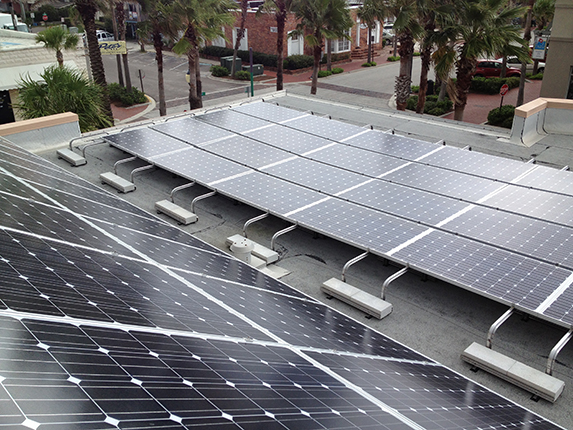
Create Your Own Power Plant

A solar power system is not an energy saving appliance, but an energy harvesting apparatus. Having solar means you own and operate your own power plant, instead of purchasing all your kilowatt-hours from the utility monopoly.
A solar installation is best complemented with a high-efficiency building, as fewer panels will be required to achieve net-zero, reducing array size and total investment.
Reduce Energy Costs

An average North Florida home sees an electric cost reduction of 70-90% with a grid-tied PV system. Applying this 30+ year avoided electric cost (a tax-free dividend) to a low-interest loan payment allows us to produce a zero net cost solution for many people.
Because solar allows customers to monetize sunshine, it behaves like an annuity, a one-time financial investment that receives an expected dividend for a set term. Most homeowners will see around a 7% annual return on their solar investment the first year. For qualified customers, a 3% interest loan can be made, so a tax-free 4% return is quite possible. Electric rates typically rise about 3.5% per year, and so this net return increases with each rate hike.
Increase Your Home’s Value
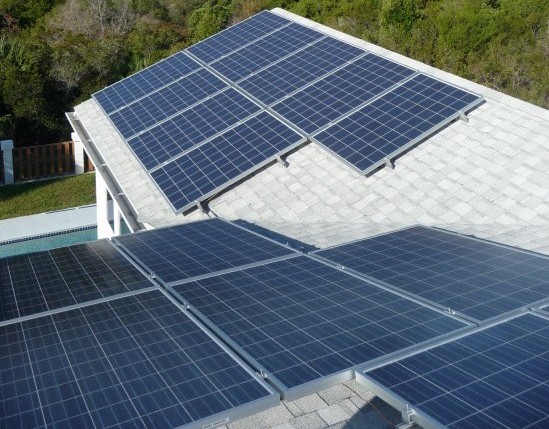
The average solar panel investment increases home resale value by about 3.5%. In most cases, this increase exceeds solar installation cost, providing an instant return on investment. This valuation increase is also exempt from taxes in most states, including Florida.
Read more about the solar-based home valuation increases in the study here.
Government Incentives
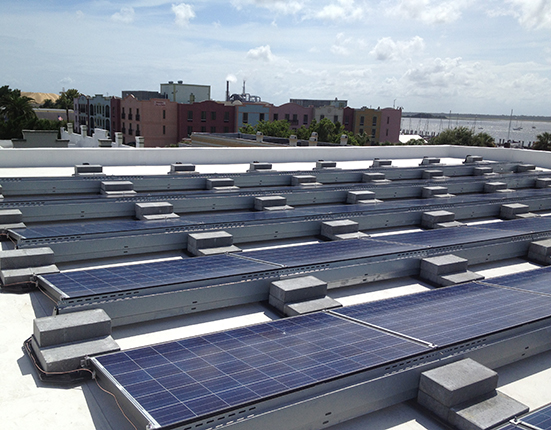
To encourage adoption of solar power systems, governments provide many financial incentives, including federal tax credits, utility rebates, production credits and no state sales tax. In addition, all Florida for-profit utilities are required to provide their customers full retail value for every solar-harvested kilowatt-hour (not all states have such laws), making Florida the ideal “Sunshine State.”
Check here to find all available solar incentives.
“Everything went well. My meter is going backwards!” — FL Electric Customer
More Reasons to Go Solar
- Harvesting sunshine is more cost-effective than paying the monopoly electric utility company for energy.
- Solar uses US domestic energy (sunshine) that reduces the need for oil from unfriendly countries overseas.
- A1A Solar uses solar equipment from proven US based companies.
- A1A Solar is a US company staffed with the finest US solar professionals.
- Today’s solar power equipment is advanced, mature technology providing the highest levels of efficiency and reliability expected by A1A Solar customers.
- Solar power panels are typically warranted for 25 years and have a lifecycle of 30+ years.
- Using solar energy is a fast-growing part of the solution to meet our world’s future energy needs without using fossil fuels and significantly reducing many forms pollution.
- With real-time, online system performance monitoring of solar production, you know what your system produces every day and every month, year by year.
- The path to solar ownership is simple with no-money-down financing (with approved credit).
- It’s fun to watch your meter spin backwards!



